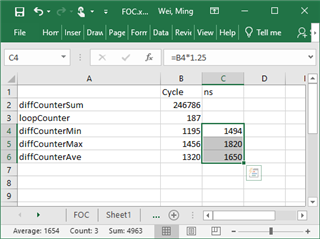Hi,
I'm using the am243x-EVM with tcp server example.
I set a timer to give semaphore and wake free rtos task.
I have the following line in FreeRTOSConfig.h #define configMAX_SYSCALL_INTERRUPT_PRIORITY (0xE0U)
What should be the timer interrupt priority in (syscfg) so it will be lower than free rtos - so the task can awake ? (allowed range is 0-15)
Thanks,
Eli



